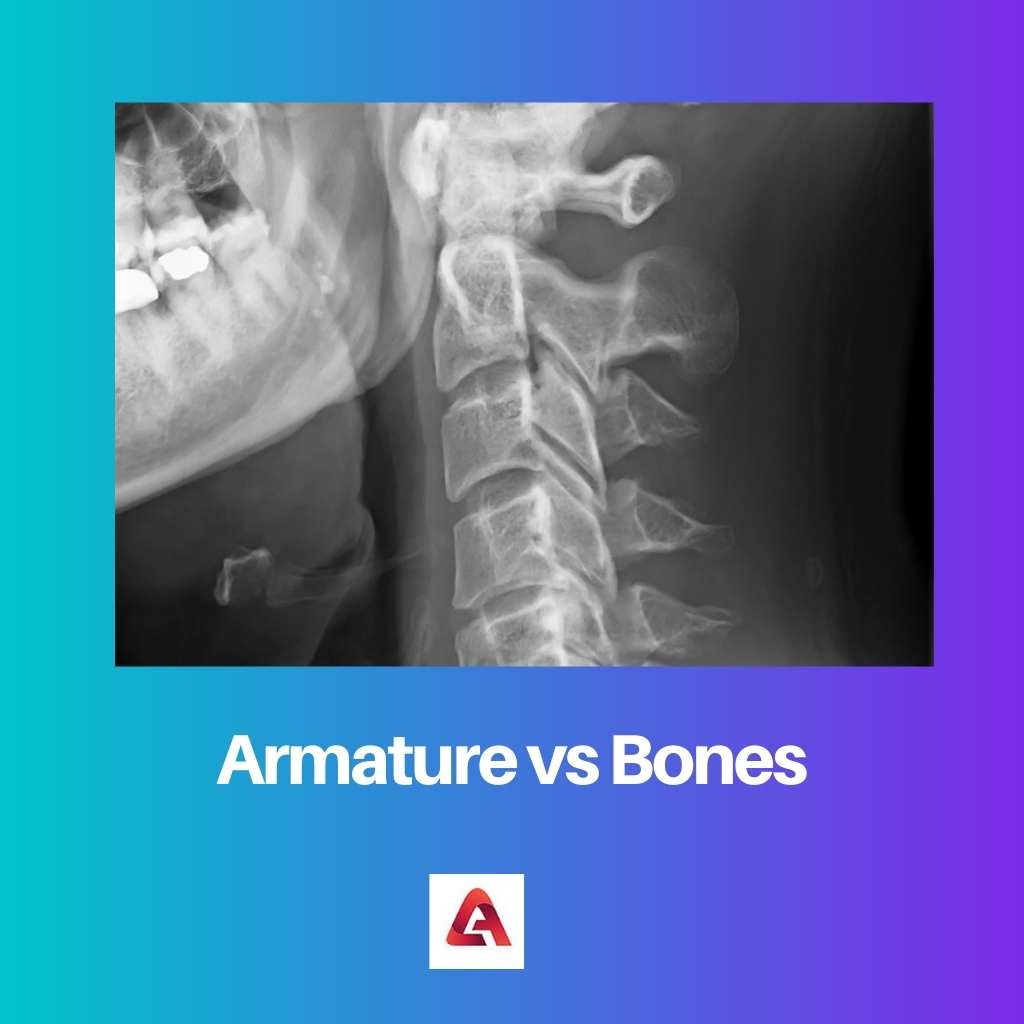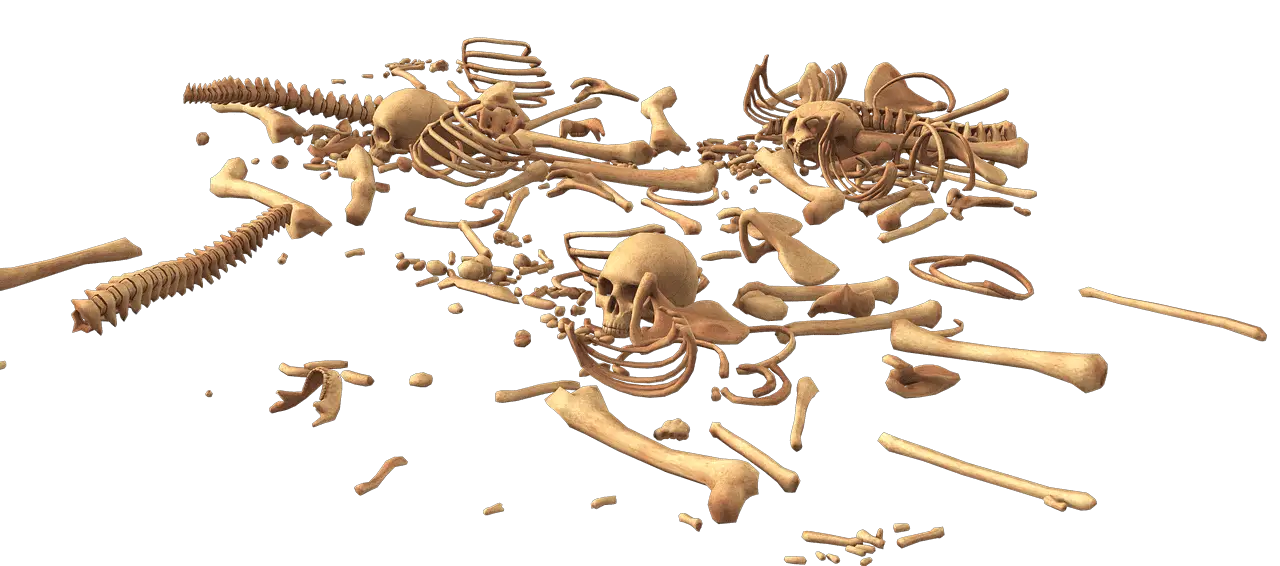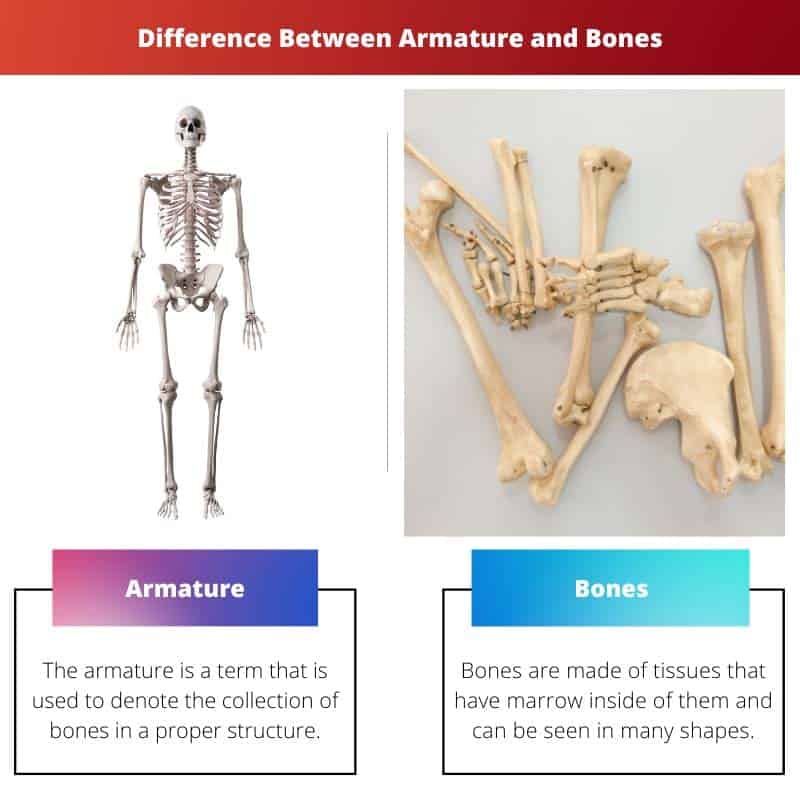The human body is a very astonishing creation of nature. There are many complex organs involved in the functioning of the body.
Just like a machine, a body requires energy to perform specific tasks. There are many different organizations responsible for the consumption and distribution of power.
Bones and armature are also two important factors or organs of the body.
Key Takeaways
- Armatures are skeletal structures used in animation and sculpture to provide support and define the form of a character or object.
- Bones are digital tools in 3D animation and rigging to control and manipulate the movement of characters or objects.
- Armatures are physical constructs used in traditional media, while bones are virtual constructs used in digital media.
Armature vs Bones
Armature refers to a digital skeleton used to rig and animate characters or objects in 3D software and acts as a framework for the character, allowing it to move and deform realistically. Bones are the individual components that make up and are the building blocks of an armature.

A covering shield or similar structure in living organisms’ bodies is called an armature. The armature is sturdy and helpful in defending a person or animal from predators and external threats.
The armature is also found in plants and trees. Another definition describes armature as the collection or group of bones.
To understand it better, a person can think about the shell of a tortoise.
A living tissue responsible for the construction of a human skeleton or armature is called a bone. There are three types of tissues found in bones: subchondral, compact, and cancellous.
Bones are sturdy tissue that requires calcium. Without a bone, a body can never function the way it does.
Comparison Table
| Parameters Of Comparison | Armature | Bones |
|---|---|---|
| Meaning | The armature is a term that is used to denote the collection of bones in a proper structure. | Bones are made of tissues that have marrow inside of them and can be seen in many shapes. |
| Found in | The armature is found in living organisms along with plants and trees. | Bones are only found in living organisms such as humans, animals, birds, etc. |
| Made of | The armature is made by including all the bones of the body in an appropriate structure. | Bones are constructed by many components, for instance, marrow, tissues, cells, etc. |
| Usage | The armature is essential to provide support for the body and give it the general shape. | Bones are essential because they protect internal organs, help in movements, and work with the system. |
| Number | There can be only one armature in the body because it is a group of bones, not a unit. | There can be hundreds to thousands of bones in the body, depending on the species. |
What is Armature?
In general, a collection of bones is known as an armature. It is the fundamental structure of other organs assembled in a frame.
A skeleton can also visualize the armature, but it has many different definitions and is related to multiple fields.
An armature can have numerous bones of different shapes depending on the species. For example, the armature in the human body consists of 206 bones.
The armature is a significant term in animation because a 3D model requires a well-functioning set of armature.
This armature is a digital copy of a real-life armature. In 3D modelling, an armature is created and operated by rigging artists to make the subtle movements of the models.
A passive object in the 3D software requires an armature to perform several activities and tasks.
Some people define armature to be armour that provides protection for living organisms and non-living objects to protect themselves from external dangers. A body has many layers, and armature can refer to two things.
One is the group of bones, and the second is all the exterior structures protecting the internal organs.
Some people might think that armature is the synonym of the skeleton, but armature has specified definitions in the world of biology. Hence, the armature can be a complex term to be elaborated on.

What is Bones?
The tissues used in the formation of a bone are compact tissues, subchondral and cancellous tissues. The compact tissues are more rigid and form the outer layer of the bone.
The subchondral tissues are located at the endpoints of bones and are covered with a layer of cartilage tissues. Cartilage tissues are the tissues that allow bones to create and develop in children.
The whole structure of the bone is covered by a membrane known as periosteum. Bones have canals and tunnels right beneath this membrane to convey nourishment and blood to the bones.
The required nutrition is supplied to the bones via lymphatic vessels.
The bones have been classified based on their shape, such as irregular, short, and flat. But mainly, people use short and long to denote a bone.
There are about 206 bones in the human body, and 126 of them are called appendicular bones, while 80 of them are known as axial bones.
Appendicular bones are found in ankles, feet, arms, legs, shoulders, wrists, hips, etc.
Appendicular bones are found in the sternum, head, face, etc. The types of cells used in bone formation are hematopoietic, osteoblast, osteocyte, and osteoclast.
These can also be found in the marrow of bones. A marrow is a liquid substance in a bone.

Main Differences Between Armature and Bones
- By looking at an armature, a person can visualize what living organisms it belongs to. On the other hand, it needs proper research and experimentation to find out the owner of a bone.
- An armature is simply a group or collection of bones found in the body. On the other hand, bones are something made of tissues and marrow.
- Every species has its separate armature that has unique shapes. On the other hand, bones can be short, long, flat, and irregular shapes.
- The armature is associated with living organisms, or it belongs to objects. There is no specific type of armature. On the other hand, bones are mainly divided into appendicular and axial classes.
- The existence of armature can be seen in the plants and trees. On the other hand, bones are only found in animals, humans, birds, and all sorts of living beings.





